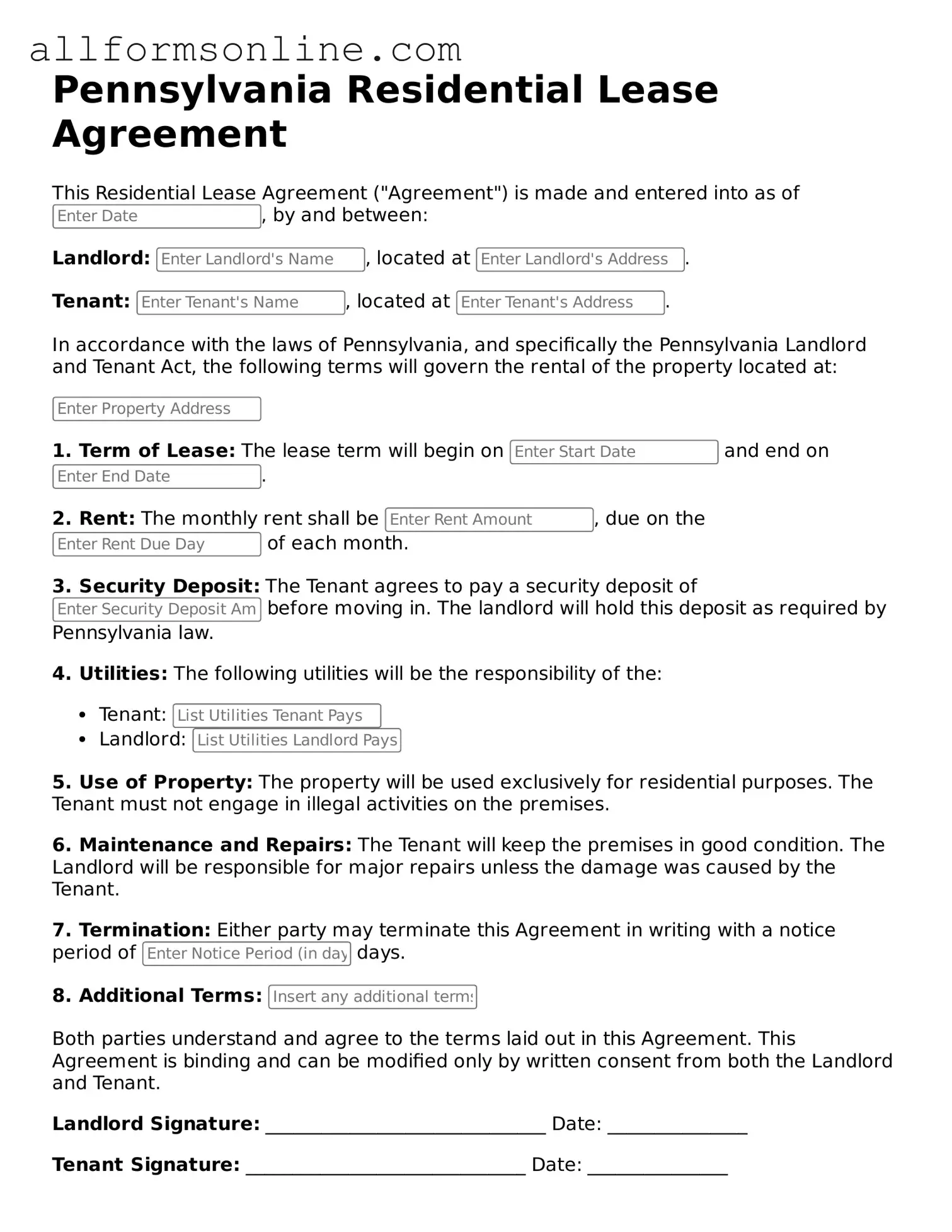What is a Pennsylvania Residential Lease Agreement?
A Pennsylvania Residential Lease Agreement is a legally binding contract between a landlord and a tenant. This document outlines the terms and conditions under which a tenant agrees to rent a residential property. It typically includes details such as the rental amount, lease duration, security deposit requirements, maintenance responsibilities, and rules regarding pets and guests. Both parties must sign the agreement to make it enforceable.
What are the key components of a Pennsylvania Residential Lease Agreement?
Key components of a Pennsylvania Residential Lease Agreement include the names of the parties involved, the property address, the lease term, and the rental payment details. Additionally, the agreement should specify the amount of the security deposit, maintenance obligations, and any restrictions on tenant behavior, such as smoking or subletting. It is also important to include clauses related to termination of the lease and procedures for addressing disputes.
How can a tenant terminate a Pennsylvania Residential Lease Agreement?
Terminating a Pennsylvania Residential Lease Agreement typically requires adherence to the terms specified in the contract. Most leases include a notice period that tenants must provide to the landlord, often ranging from 30 to 60 days. If a tenant needs to break the lease early, they should review the agreement for any penalties or conditions that apply. In some cases, tenants may negotiate with the landlord to reach a mutual agreement for termination.
Are there specific laws governing residential leases in Pennsylvania?
Yes, Pennsylvania has specific laws that govern residential leases, primarily found in the Pennsylvania Landlord-Tenant Act. This legislation outlines the rights and responsibilities of both landlords and tenants, including regulations on security deposits, eviction procedures, and maintenance obligations. Tenants should familiarize themselves with these laws to understand their rights and ensure compliance with state regulations.
